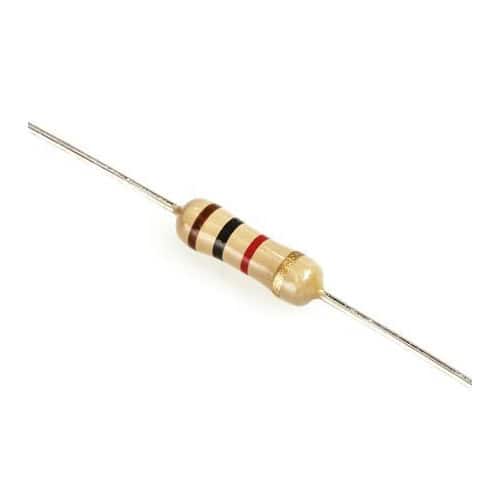It was the dream of Nicola Tesla to transmit energy wirelessly from a remote power station to homes and factories around the world. While the technology still does not exist to transmit high amounts of power over long distances, we can certainly transmit power wirelessly over shorter distances.
In this tutorial, we will build a wireless power transmitter and receiver that can transmit enough power to charge a 3.7V battery.
How Wireless Power Transmission Works
In a wireless power transmitter, incoming power is converted to a high frequency oscillating signal. This oscillating current is then sent to a wire coil. Electric current flowing through a wire loop generates a magnetic field, so the oscillating current creates a pulsating magnetic field around the transmitting coil.
The power receiver has another wire coil, which picks up the magnetic field from the transmitter when placed near it. Since a varying magnetic field generates an electrical current in a wire loop, the transmitted magnetic field is converted to an electric current in the receiving coil.

How to Build the Power Transmitter
Here is the schematic for a simple wireless power transmitter:

The oscillator is created from the resonant frequency of the tuned tank circuit made up of L1 and the parasitic capacitance of the transistor (several thousand pF).
The frequency of the oscillator can be calculated using this formula:
Where
L: Inductance of L1
C: Parasitic capacitance of the transistor
Wire coil L1 can be made by wrapping 20 turns of magnet wire on an 11 cm diameter former. The center tap should be added in the middle at turn 10. This will give an inductance of about 80uH, which will resonate with the parasitic capacitance of the transistor at about 260kHz.
I used the MRF475 NPN silicon power transistor, but other power transistors can be used as well. However, these will require a small heatsink as they run quite hot.
Potentiometer R2 varies the current to the transistor, which changes the effective capacitance and results in the ability to shift the oscillator frequency slightly. We can use this to tune the output frequency to match the resonant frequency of the receiving coil and thus improve the efficiency of power transmission.
When powered with a 12V power supply, the transmitter circuit draws 1A of current, so the power output is 12V * 1A = 12W.
How to Build the Receiver
Here is the schematic for a wireless power receiver circuit:

The coil (L1) can be made by wrapping 18 turns of magnet wire around an 11 cm former. The center tap should be added in the middle at turn 9.
When the transmitting coil and receiving coil are placed close to each other and tuned for resonance with potentiometer R2, the LED on the receiver should light up to show that power is being transferred.
After analyzing the receiver circuit, I found that the LED had about 2.3V across it and about 20mA current flowing through it. The power in the LED can be calculated with this equation:
W = V * A
Where
W: the power (in Watts)
V: the voltage (in Volts)
A: the current (in Amps)
So the power in my LED is:
W = 2.3V * 20mA
W = 46mW
Considering the power transmitter was outputting 12W, the efficiency of this system is only 0.046W / 12W = 0.38%.
Now we can see why Nicola Tesla’s ideas still have a long way to go!
Adding a Battery Charger
Although the efficiency of wireless power transmission is low, sometimes the benefits of having a device that can be charged wirelessly outweigh the power consumption costs.
This project will allow a power receiving device to operate from a 3.7V lithium battery. When the receiving coil is placed near the transmitting coil, the battery will be charged with a TP4056 Li-ion battery charger module.
Here is the circuit schematic:

Diode D2 is a 5.1V Zener diode and D1 is an LED.
Although the dream of kilowatts of power arriving in your home wirelessly has not yet materialized, there are many other uses for wireless transmissions. The most important of these are the abiltiy to charge devices wirelessly without the need for charging cables.
If you have any questions about this project, be sure to leave a comment below!





How did you calculate the current the transmitter circuit draws?
Where is the half or full -bridge inverter?